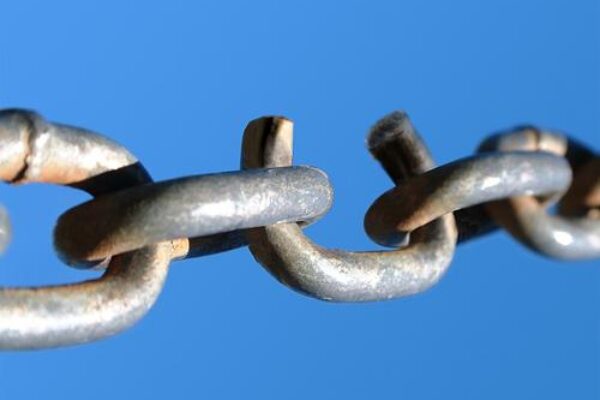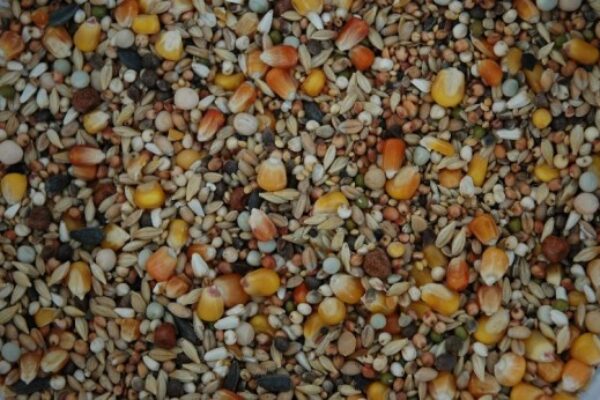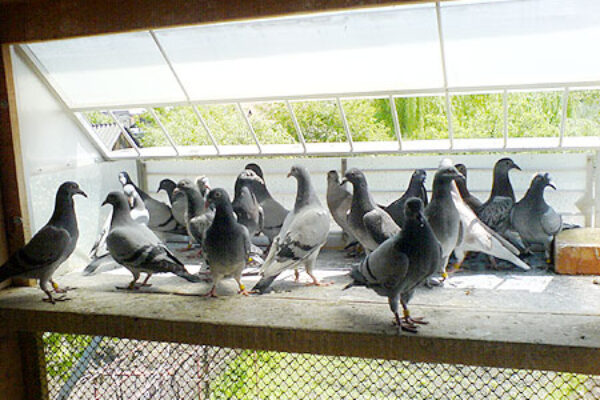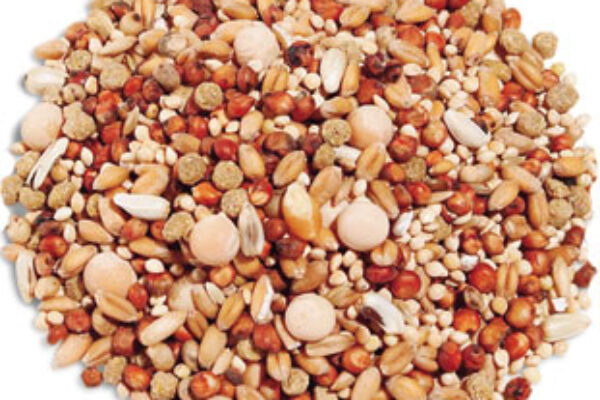Article provided by Bob Prisco
 Culling is a procedure that is easy for some, hard for others and impossible for many fanciers. Each fancier must identify the goals for his loft that he wishes to achieve before he knows which birds he needs to save and which he needs to eliminate or cull. Also, these goals will help him to decide what type of new blood he needs to introduce into the breeding program for improvement.
Culling is a procedure that is easy for some, hard for others and impossible for many fanciers. Each fancier must identify the goals for his loft that he wishes to achieve before he knows which birds he needs to save and which he needs to eliminate or cull. Also, these goals will help him to decide what type of new blood he needs to introduce into the breeding program for improvement.
I wrote this article for the performance minded fancier who is looking to improve the quality of his flyers and breeding stock each year, therefore becoming more competitive and consistent in both race results and the quality of young birds that he breeds.
Below are a few goals a fancier may select for himself and his birds. This is a small list, but may serve as a general idea of what he may want to achieve (goals) and improve upon each year.
- Competitive in young bird races and futurities only,
- Competitive in old bird races, 100-600 miles,
- Competitive in all average speed races, both old and young birds,
- To Specialize in short / sprint races or long distance races,
- To Fly only futurity races, both local and out of area;and
- To Start his own breeding station to sell birds for flying / breeding potential.
As you can see there are many choices and combinations of goals one can set for himself and his loft. If you are a serious fancier, you must identify and focus on your goals and select and cull accordingly.
To improve the quality of your flying / breeding loft requires an accurate record keeping system or program. This record keeping requires that you record the band numbers of all the offspring from each pair of breeders. Hopefully, you will have 4-6 young birds from each pair to evaluate each year. I use the phrase accurate record keeping, but if you are not breeding in individual breeding compartments, then you really do not have 100% knowledge of both parents. You can always guarantee the hen, but occasionally the cock maybe suspicious.
Regardless of how you set up your breeding loft, you must record band numbers as accurately as possible in your own situation. You will need to refer to these numbers occasionally for evaluation when you need to save or cull your birds.
BREEDING LOFT – Breed only from birds with performance backgrounds that meet your own goals that you have selected for you and your loft. They must be healthy and produce healthy young birds at the time of the year that you want to breed. Breed at least 4-6 birds from each pair. Give the pair 2 years to prove its breeding ability. In 2 years you should have 8-12 birds from each pair to evaluate.
WHAT DO WE LOOK FOR IN THE OFFSPRING? – Good health, there can be no sound foundation without it. If the young are not strong and healthy then look no further. CULL the pair and their children! Do the children train easily, loft fly freely and are easy to settle and manage? If the answer is no, you must take a long hard objective look at the parents. Can they help you to improve? If the answer is no, cull the pair. How many races have the young from each pair flown in 2 years, and what were the results in race competition? The birds must be able to race each week if necessary, and consistently be in the top 10% of the birds competing. If the 8-12 young raised from this pair have only flown a few races with no positive results in the last 2 years, then you know the answer, cull the pair. How many birds do you have left after 2 years? If you raised 8-12 from a pair and only have 1 or 2 left, with several being lost at a very early age and during training, then take a very good look at which are left and their results. Along with good health, breed from birds that have a good COMPASS OR HOMING INSTINCT AND NAVIGATION SKILLS. Without both health and homing instinct, you are wasting your time and money. Is it worth raising 8-12 young from a pair only to have 1-2 left after 2 years? I will let you answer that question for yourself, but I say cull the pair.
I have always felt that a fancier is at a distinct disadvantage if he has a large number of breeders and 100 plus young birds on the race team. WHY? The large number of breeders makes it difficult to raise 4-6 young from each pair and to evaluate them properly. Trying to train and race 100 plus birds is very difficult, and it is almost impossible to determine the true worth and quality of the birds. I recommend to single or double toss the birds when you train to evaluate their homing instinct and to teach them to think for themselves and break away from the flock. However, with a large number of birds, this would take all day, not to mention the difficulty of placing the birds in actual races or racing conditions to evaluate their abilities. Most clubs have a 15-20 bird shipping limit. With large numbers, you must consider the extra time, increased cost, overcrowding and health factors. Most times these extra birds prevent a fancier from finding out the true worth of his breeders and flyers, which to save and which to cull.
Take a good look at the top flyers and breeders in your club and combine. Most will not have a large number of birds, unless they also advertise and sell birds. It has been proven many times over, a fancier with a small team of quality stock, 30-40 young birds and 20-30 old birds, can fly very competitively in combines with 100-400 lofts against 1000-6000 birds each week.









I agree with all fanciers that culling is an awful task. I take care not to breed too many and try to let the basket do the job for me. If I find I have too many there are often fanciers who are short of a cock or hen for breeding the next years young birds, but about every 3 years I do find that I have to cull.
Another way of culling (in a sense) is to advertise in the local paper. Also, during the summer months many hunters are looking for pigeons for training their sporting (gun) dogs. I agree that if you want to keep improving the quality of your birds you must get rid of the ones that are not consistent in some way or another. I also imagine that a vet would cull for those not able.
What’s the most humane way to cull, besides giving a bird away?
They can be sold to slaughterhouses. In the end it may not be the most humane but at least they are serving a purpose — to feed people.
I do believe in culling, but only for weak or sick birds. I always let the basket be my culler Clinton Trinidad
These systems may be good for flyer’s that have many birds, but the small lofts that breed out of their flyer’s the birds that come back from the races they breed the best to the best and go from their ,Bring some new ones in and mate them to theirs and see what they get. the race sheet tells it all . Some flyer’s that fly all their birds say 100 of them and they get only 10 that are good , i fly with 30 and 7 are good , that proves that one in 10 for the big flyers are good , in my 30 birds my odds are more than 4 good birds out of 10 . its in the race sheet at the end of the season . it cost me less in feed and maintance .
Many years ago, in my younger days, culling was not a problem because we (my dad and I) actually ate the culls. There was an ultimate use for every pigeon. But today I no longer eat squab, primarily because the process of dressing them out for consumption is not an easy task (and my dad, who was much more efficient at it, is gone), but also because today we are giving medications and supplements that we never used in the past. Although I recognize the need to cull if the seed stock is to improve, I also find it very difficult and distasteful to cull an otherwise healthy pigeon. I would much rather give it to somebody as a pet. As Becky mentions above, sick or injured birds are another story.
I agree. I really don’t know what is the easiest way to cull a bird and know one talks about it. Looking for info. Thanks.
Hi DK, A horrible job that nobody likes doing,I hate it more then most. If I have to cull I use 2 methods. Fast the birds for 24hrs place them in a basket and cover to keep them calm. 1. Take a bird in one hand and with your right hand place the head in your hand and grip littly where it joins the neck, cover the eyes with the hand also. Let go of the body of the bird so that the neck takes the weight of the bird. At the same time rotate the pigeon with enough motion to bring it to the horizontal. You will have to judge how much force to use, but I doubt it is a much as you think. The worse part of doing it this way is that 9 times out of 10 you will feel the neck break and the bird, although dead, will still flap around for 15 to 20 seconds. Method 2 is my ‘cowards way’. Take 2 buckets the same size. Fill 1. with two bricks or something of equivilant weight, cover bricks with water. Into bucket 2. put cold water to about 1/3rd full. Place the bird calmly into bucket 2. and put bucket 1. on top. With this method you can walk away and return once the bird is dead, which takes about 15-20 seconds. Much better to breed fewer young birds and try your best to move your extra birds to others lofts as sitters. A horrible subject and I found it very hard to type this. Regards
much the same system , hold just under head tightly between 1st and 2nd finger, close your hand over the head, with rest of bird hanging free, make about 3 small spining circles with you hand and you will feel neck break, very quick and humane, remember to hold firmly or can slip out, once neck broken STOP as if keep going head will come off.
Why will they not publish a univeral system re bird welfare.
bird will flutter a few seconds after deed
Most keeping chicken books include how to cull, why not pigeons ????
Culling is very important, but it doesn’t have to be lethal culling. Many of my best birds were given to me for free (you could call them culls since obviously they were not the “best”, or they would be kept!). There are always people out there in need of homers or wanting to get into pigeons. Our culls can easily serve their purpose. Regardless of whether they will be raced or not, they can find a new home somewhere.
Of course birds culled due to sickness are another story. But perfectly good birds who just didn’t make it back quick enough, etc, can be useful to other people.
i was loaned some birds to get started witch was great but when the guy wanted them back i did so but than found that most of them were killed by hawks and i loved 2 out of 6 but life goes on
this may b very true, it’s hard 4 me 2 cull!!!!! i some times fall in love with the birds, but this is very true
I must admit culling birds is not my favourite part of this sport,in fact the prospect of having to cull my birds makes me feel ill,and I have to switch off in order to carry out this hideous task.However,I do agree with the writer because if you dont get rid of the unsuccessful birds you will never achieve consistant top results in your breeding or racing programs.